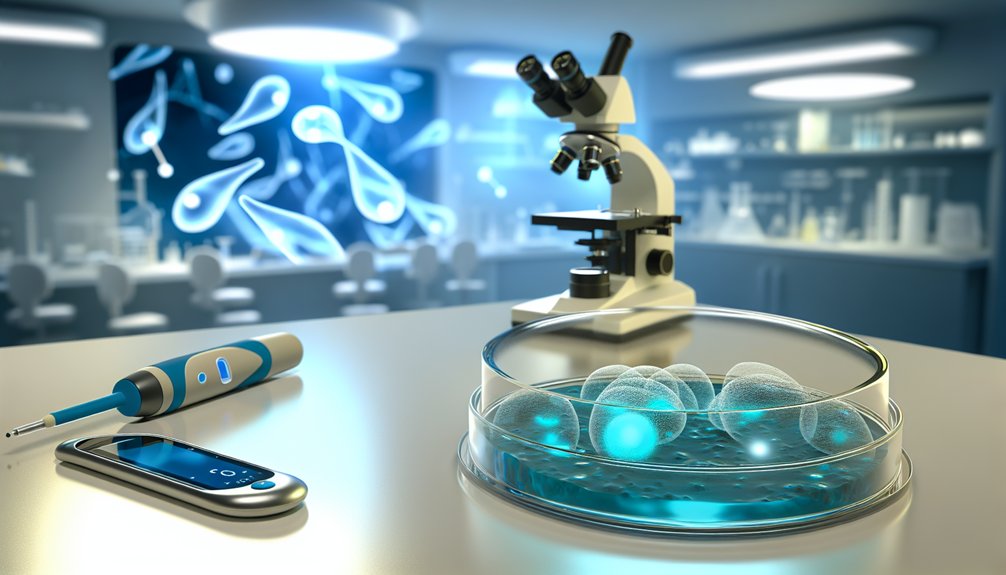Recent breakthroughs in diabetes treatment are truly inspiring. Innovations like stem cell therapy have helped patients achieve insulin independence, dramatically improving their quality of life. Meanwhile, immune-evasive islet cell therapies allow for the production of insulin without harsh immunosuppressive drugs. AI tools enable early detection of Type 1 diabetes, offering hope for timely intervention. Non-invasive monitoring devices have eased the pain of managing blood sugar. These advancements spark a brighter future for those living with diabetes. The journey continues with so much more to discover.

In a world where diabetes often feels like an unyielding shadow, recent breakthroughs shine a hopeful light on the horizon, making it clear that change is not only possible but already happening. Remarkable advancements in stem cell therapy have emerged, with patients in Beijing receiving islet cells derived from their own reprogrammed stem cells. This innovative approach has led to the first patient remaining insulin-independent for over a year. Imagine the joy of waking up each day without the burden of injections or constant blood sugar checks. Such stories are becoming more common as clinical trials show promising results for others as well.
Meanwhile, the development of immune-evasive islet cell therapies by Sana Biotechnology offers another glimmer of hope. Their first-in-human trial revealed that implanted cells can survive and produce insulin without the need for immunosuppressive drugs, which has traditionally been a requirement due to the risk of immune response against transplanted cells. For those living with diabetes, this means fewer side effects and a brighter future.
The idea of a treatment that can function autonomously, responding to blood glucose levels, is nothing short of revolutionary. Additionally, AI tools are now able to detect early signs of Type 1 diabetes, allowing for timely interventions and potentially preventing serious complications.
Artificial intelligence is also playing a vital role in transforming diabetes care. AI tools can now predict the onset of Type 1 diabetes up to a year before symptoms appear. This early detection can prevent severe complications, such as diabetic ketoacidosis. The groundbreaking GLP-1 hormone research has opened new doors for treating both diabetes and obesity simultaneously.
With personalized recommendations for insulin and carbohydrates, individuals can manage their conditions more effectively, avoiding those dreaded blood sugar spikes that can disrupt daily life.
Moreover, advancements in genetic testing are paving the way for personalized therapies. By understanding genetic profiles, doctors can tailor treatments to each individual, improving outcomes and reducing complications.
The future of diabetes care looks bright, with non-invasive glucose monitoring devices making life easier and less painful.
As these breakthroughs unfold, they bring with them a renewed sense of hope for millions, reminding everyone that the path to better diabetes management is not just a dream, but a reality within reach.
